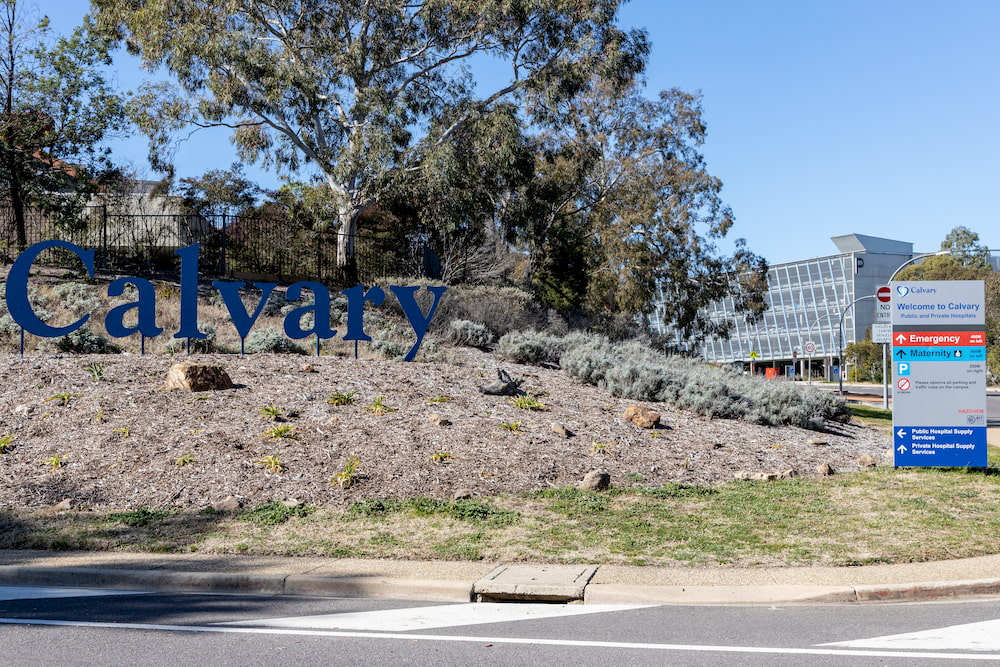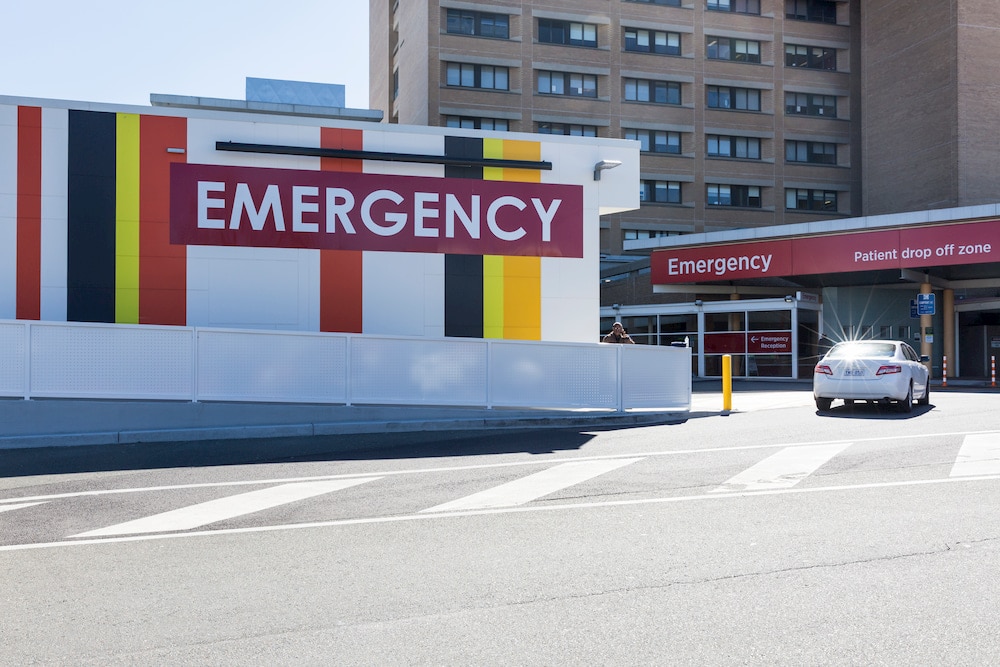The ACT’s health infrastructure is in an unhealthy condition, according to the Canberra Liberals. Their diagnosis: government inefficiency and (like a bungling midwife) failure to deliver.
Expansion of two hospitals have been delayed, they claim, while there are fears the ACT might run out of hospital beds its growing population needs.
The ACT Government’s response, however, is that these projects are not overdue, but have been modified during their long gestation.
This week, Shadow Health Minister Giulia Jones said Labor and the Greens had a track record of failing to deliver on the critical health infrastructure Canberra needs.
Recent government briefs, Mrs Jones said, revealed an “impending shortfall” of hospital capacity in the north, while the expansions of both the Centenary Hospital for Women and Children and the Canberra Hospital Expansion (formerly known as the SPIRE project) had been delayed.
Moreover, Mrs Jones continued, Chief Minister Andrew Barr recently said he had a “degree of concern” his government could deliver its major infrastructure commitments; large infrastructure projects in NSW and Victoria could overwhelm Australia’s construction industry.
“It’s time for Labor and the Greens to stop talking about hospital expansions, and start actually delivering them,” Mrs Jones said.
Mrs Jones may have raised the spectre of failure, but the Government promises these infrastructure projects will not be “phantoms”.
Shortfall of hospital capacity?
According to the Portfolio Brief for the Minister for Health (October 2020), the ACT’s public hospital system will require additional capacity by 2026–27.
Canberra’s public hospital system will need an estimated additional 45 adult acute inpatient beds by 2027, over and above what is already currently provided or planned at Canberra Hospital (including the Canberra Hospital Expansion) and Calvary Public Hospital Bruce, according to the ACT Health Directorate’s modelling (based on current service trends and adjusting for population growth and ageing).
By 2031–32, this is estimated to increase to 160 adult acute inpatient beds and 25 Emergency Department treatment bays, and to 275 additional adult acute inpatient bed and 55 ED treatment bays by 2036–37.
“Failure to plan now for the additional capacity required at 2026-27 and beyond will likely result in significant pressures on the public hospital system,” the Portfolio Brief warned.
But the ACT Government is reassuring: “Canberra will not run out of hospital beds,” a spokesperson stated.
The demand projections are based on current service trends, the spokesperson explained. The ACT Government will increase hospital capacity: the southside Canberra Hospital will gain two 32-bed wards, while a new northside hospital will be built mid-decade, replacing the existing Calvary Hospital.

However, according to the Portfolio Brief, this hospital could take up to 10 years to plan, design, and build.
Renovating the more than 40-year-old Calvary Hospital, established in 1979, could be prohibitively expensive. “The hospital is of an age where refurbishment of buildings is not cost-effective nor likely to provide a fit-for-purpose, modern health facility,” the Portfolio Brief stated.
Construction of the new hospital will be based on consultation with Calvary Health Care, the spokesperson said, as well as with consumers, carers, and clinicians. The ACT Government may build the hospital on the Calvary site in Bruce or in a new location, depending on the costs and benefits of using existing infrastructure or building a new hospital.
The ACT Government will also create more avenues for Canberrans to get high-quality health care outside hospitals, taking pressure off the system, the spokesperson said. This includes a new $21 million elective surgery centre on the northside; expanding Hospital in the Home, allowing more patients to receive care from nurses at home; and setting up more walk-in health centres across the ACT with expanded service offerings.
“Treating people who don’t need to be in hospital in a more appropriate setting will improve their health outcomes and free up hospital capacity while we continue to invest in new hospital infrastructure,” the Government spokesperson said.
Hospital delays: Centenary Hospital
The expansion of the Centenary Hospital for Women and Children was first announced four years ago, with an envisaged completion date of March 2021. That project is now expected to be completed in phases by September 2023. Elements of the project will be delivered over the next two years, while some new areas are already open to patients.
The Centenary Hospital opened in 2012, but Canberra’s growing population have necessitated the expansion. 65% of all public births in 2018 took place at the hospital, and Canberra Health Services expect significant population growth – bringing both more births and a growing demand for adolescent and mental health services.

The scope of the expansion project has been substantially changed since 2017, the Government spokesperson said.
Following feedback from patients during the design phase, the Paediatric Adolescent Ward was significantly refurbished and integrated with the Adolescent Mental Health Unit (originally to have been in a separate building). The new ward opened in October 2020.
A dedicated Early Pregnancy Unit has also been added to the plans to support women and their families who miscarry at fewer than 20 weeks gestation.
“Being deliberate in designing the right hospital for our patients has always been our priority,” the Government spokesperson said. “Expanding and upgrading a working hospital requires a staged delivery to ensure minimal impact on health services and operations. One benefit of this is that completed elements can be opened once completed, rather than at the end of the entire project.”
Canberra Hospital Expansion
While first announced in 2016 with a completion date of 2022, the ACT Government say they’re on track to deliver the Canberra Hospital Expansion by 2024.
The 40,000 square metre expansion at the existing Woden hospital campus is described as the largest healthcare infrastructure commitment ever undertaken by the ACT Government.
Several stages are already complete, including a new administrative building completed in March 2020; one building has been refurbished, with another almost completed; and a new four-story building should be completed soon.
Construction of the main Emergency, Surgical and Critical Healthcare Building will begin this year. The Government has promised more operating rooms, more treatment spaces, and more intensive care beds.
The Government has released initial draft plans for the project, and is seeking input from the wider community on the early design concepts until 24 February before submitting the formal development application in March. Documents for feedback include early designs of the building floorplans, new details on entry plazas and green spaces, and designs for a relocated helipad.



